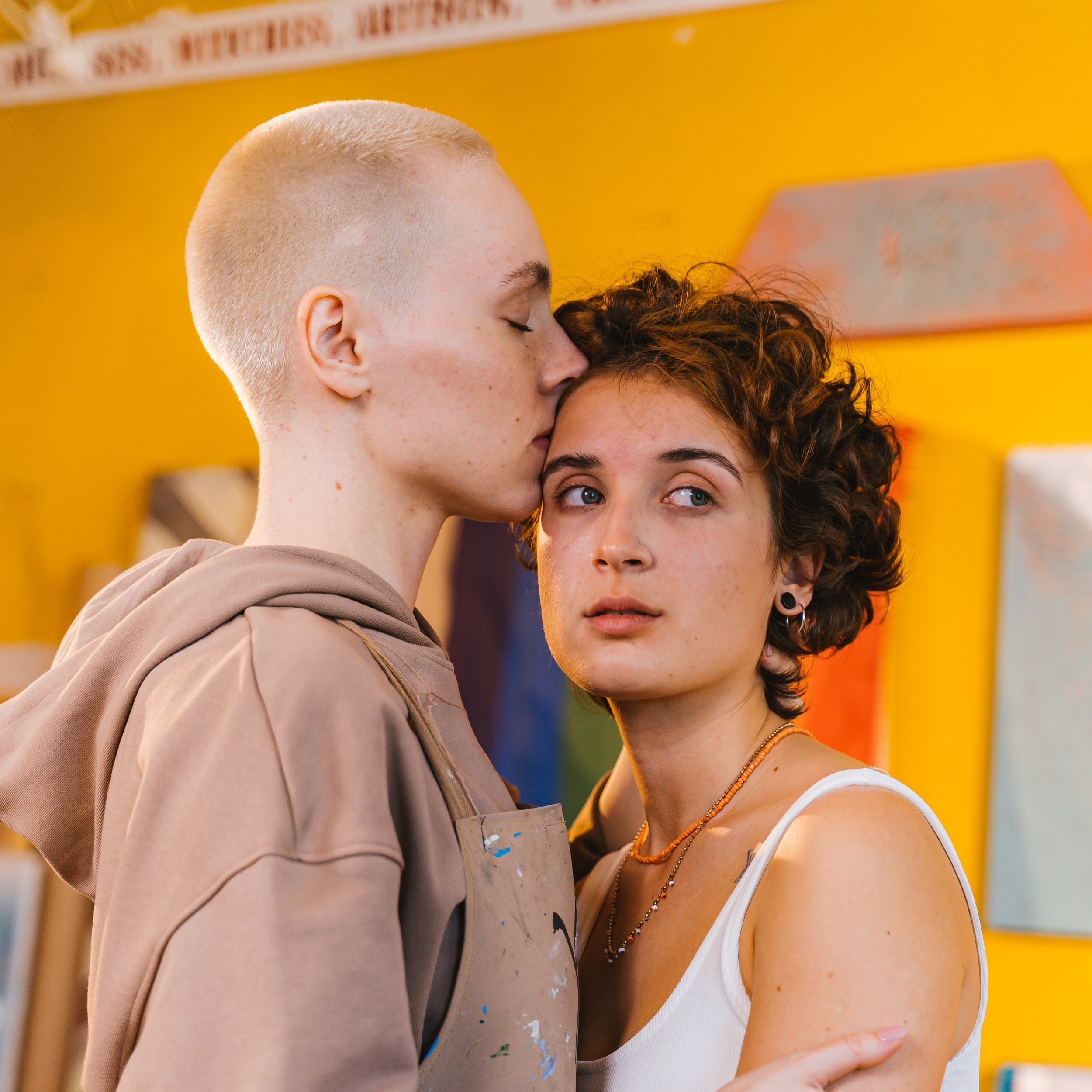‘Representation Hugely Informs How We Come to Love’: Navigating a Second Adolescence After Coming Out as a Lesbian
By Izzie Hingston
Today the vocabulary of performativity in queer culture is highly visible, and notions such as gender fluidity, bisexuality, pansexuality, asexuality and being non-binary are circling widely. This has been a rapid transformation from the constricting gender and sexual binaries of old.
But if feminist politics ceases to revolve around the concept of gender, this has significant ripple effects within queer representation. Representation hugely informs how we have come to love and the types of relationships we seek.
With heterosexual relationships dominating every corner of media, it is common as a woman loving a woman to find yourself inheriting a male gaze. Due to this pervasive fear combined with the sexualisation of lesbianism, when I was growing up not only did queerness feel wrong, it meant there was not adequate representation.
Girls were not exposed to anything other than heterosexual relationships. My school library would not stock queer love stories for fear of corrupting students, and depriving young queer people of a script. This was never something I consciously realised, but when you only see women being adored by macho heroes or knights in shining armour, there is a risk of falling into binarised traps and maybe even wanting to save distressed damsels!
What does all this have to do with feminism? Well, it seems that those in charge of mainstream media outlets, films and TV are sticking to a form of ‘girlboss’ feminism left over from our parents’ generation. This type of feminism is easily consumed; it’s sexy, neatly packaged and usually pink. It promotes individual female empowerment and self-care, a personal endeavour. Nothing too radical.
This spoon-feeding of feminism reproduces sexist narratives by infantilising women. Growing up, it seemed that the ideal feminist was a straight, sexy, tame woman. What does this mean for lesbians? Zakia Salime writes that ‘power hierarchies are often reproduced online, which has led to important ongoing conversations about the reproduction of white feminism and privilege in online spaces.’
As women who happen to date women, we are resisting power on two fronts. There is the insidious nature of gender politics and the categorisation of women as well as the invisibility of lesbianism. Although, when it is visible, queer women are often sexualised or put into a box of ‘femme’ or ‘butch’. While there is nothing wrong with curating a personal aesthetic, the media is failing lesbian identity.
Entering and navigating a mature queer dating scene without adequate experience, representation or support sends us into a spiral. It can be nice to re-create those heady, lustful experiences we maybe missed out on as teenagers but what if we are succumbing to the same old power dynamics, consumerism and tropes? The frameworks designed to empower me do not save room for queerness.
We do get lesbian representation, which is often directed at lesbian audiences. One of my favourite movies is But I’m a Cheerleader, a queer cult classic. But what about the lesbian characters in mainstream media, the stuff you consume before you have fully come to know yourself? These characters are often tokens or rely on backwards stereotypes. It feels as though those in power aren’t trying hard enough to give realistic portrayals of queer women. Bodies, Bodies, Bodies, released last year, generated controversy regarding the objectification of queer people, with Amandla Stenberg saying: ‘maybe if you had gotten your eyes off my tits you would’ve watched the movie!’
My most formative media moments growing up were female characters I admired instead of ones I felt were similar to me. Characters like Katniss or Jo March were not explicitly queer but presented signs of queer coding, and seemed to reject the stereotypes of womanhood which confirms this relationship between queerness and reductive feminism. This is not to say that heterosexual women cannot be defiant and strong, it just sheds light on how representation holds such deep importance and has consistently gone awry.

